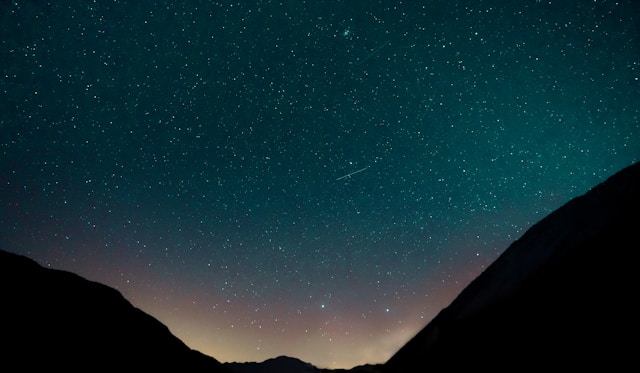If you’re going stargazing, you’ll need to find areas off the beaten path, away from urban and rural light pollution. Bright billboards, spotlights, and even the light from skyscrapers and big buildings can bleed into the dark night sky, which is called light pollution. Too much ambient lighting can ruin the experience, so if you’re closer to bustling cities, it can be difficult to see dim stars.
Some of the best summer stargazing destinations are open, free from foliage and tree cover, with clear views of the stellar night sky. Americans looking to explore the great unknown would do well to visit these top astronomy-friendly destinations.
1. Death Valley National Park, California
Nestled between Eastern California and Nevada, Death Valley is a renowned desert valley suitably far from any urban infrastructure. Would-be astronomers will love the area because it’s completely open, and at night, it’s a fantastic spot to see even some of the rarest night sky spectacles. Be sure to bring plenty of water, supplies and maybe even some blankets — it can get cold at night.
If you’re traveling far enough into Death Valley, you’ll also want a suitable off-road vehicle. It’s a proper desert, and the last thing you want is to become stranded because your transportation isn’t ready to take on the terrain.
2. Silver Cliff, Colorado
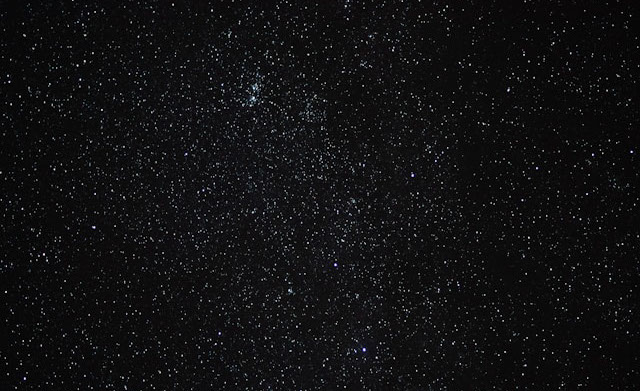
Coveted by the International Dark Sky Community, Silver Cliff and Westcliffe, Colorado, are great places to set up a telescope or other stargazing equipment. Located at a high altitude of 8,000 feet above sea level, there’s plenty of space to spread out and observe, away from other large groups in the area and urban light pollution sources.
3. Dripping Springs, Arizona
While it’s true that Arizona is typically hot and dry during the summer, various areas around the state are nearly perfect for stargazing because it cools off during the night, and there are plenty of locations to set up camp. One of those locations — Dripping Springs, Arizona — offers incredible night sky views, so far from artificial light that you can even glimpse the Milky Way and its captivating space clouds.
Other notable stargazing areas in the state include Flagstaff and Sedona. Don’t confuse Dripping Springs, Arizona, for the location in Texas with the same name — although both are great sightseeing spots.
4. Mauna Kea, Hawaii
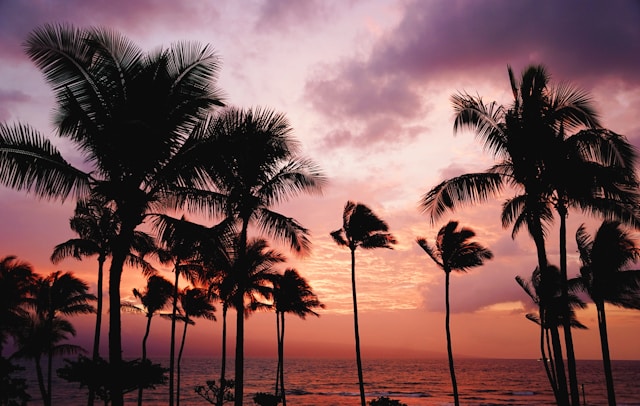
Many of Hawaii’s islands offer prime night sky viewing, but one of the most highly regarded is the beautiful Mauna Kea Summit in Kailua-Kona. It’s a dormant volcano, so in addition to the incredible land scenery, you’ll be high above sea level, surrounded on nearly all sides by the endless night sky.
There are a few powerful telescopes in the area and guided tours from expert astronomers, so it’s a veritable dark sky hotspot. Be sure to visit the Mauna Kea Visitor Information Station for expert tips if you plan to take a self-guided adventure.
You’ll likely have to plan your visit and stay on a nearby island of Hawaii, like Oahu. The Hawaiian islands are fairly close together, so transportation to Kailua-Kona is accessible.
5. Harmony, Florida
Another warm, sunny area to stargaze is the — aptly named — Sunshine State. Local populations have grown over the years, so if you want to see the sky in Florida, you’ll need a good tip for where to go. A key location is Harmony, Florida, situated between the big city of Orlando and the more rural city of Melbourne.
Harmony actually hosts several Dark Sky festivals throughout the year, and the town prides itself on its sustainable use of light. In short, it’s a wonderful place to set up shop, capture some night sky photography, and spot some stars or planets with the family.
6. Joshua Tree National Park, California
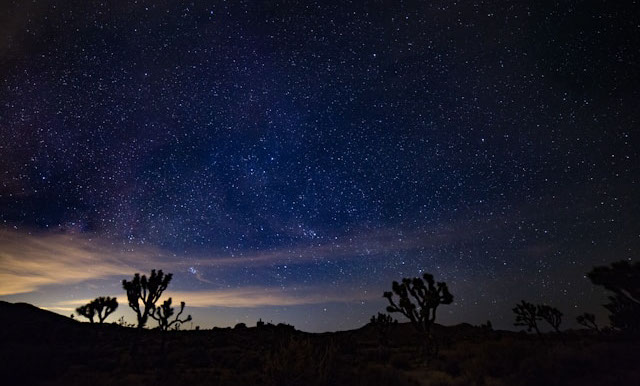
Given its size and numerous remote areas, California is a top destination for stargazers. Joshua Tree National Park in southern California is another International Dark Sky Community favorite. There are plenty of places to hike, camp and explore, but roadside pullouts are perfect for nighttime sightseeing.
Like many Dark Sky-favored destinations, community-led events are available if you want a guided experience. But it’s up to you because the views are incredible no matter where you park, camp or sit.
7. Beverly Shores, Indiana
Southeast of Chicago, this spot is located on the shores of Lake Michigan. The town has gone out of its way to nix light pollution, even retrofitting light fixtures and ensuring local lights don’t drown out the beauty of the night sky. It’s also a superb destination to escape the throes of the modern day, away from bustling city life, electronics and noisy environments. Even if you’re not bringing a telescope or powerful equipment, you’ll still have quite the experience.
8. Big Bend National Park, Texas
Not far from the Mexican border, Big Bend National Park in southwestern Texas has also been recognized by the International Dark Sky Community as one of the best night-watching locations in America. There are plenty of cozy places to stay nearby if you don’t feel like camping in the wilderness, but if you’re going to rough it, there’s plenty of ground for that, too. The park is enormous, with lots of wide-open spaces, scenic vistas and interesting topography.
9. Rappahannock County Park, Virginia
Believe it or not, there aren’t many places on the East Coast where the Milky Way is clearly visible. However, Rappahannock County Park — near Virginia’s Blue Ridge Mountains — offers precisely that. Like so many other locations on this list, it is an International Dark Sky Park, accepted and endorsed by the foremost experts on dark sky viewing.
10. Naylor Observatory in Harrisburg, Pennsylvania
What better place to stargaze than an entire center built for astronomy? Outfitted with a wide variety of telescopes and night sky devices, Naylor Observatory regularly hosts public viewing sessions, and admission is free. You and your family can view celestial objects through one of the many open telescopes on the property, lounge in the yard, observe and even discuss the experience with others. While you’re there, Lancaster County is actually home to many excellent stargazing locations.
10. Natural Bridges National Monument, Utah
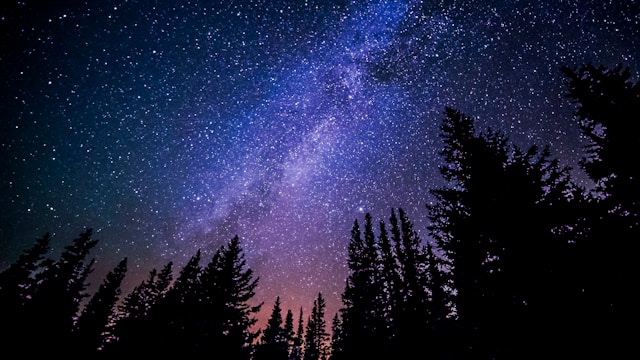
This park has a total of three natural bridges, and it has been designated as a national monument. But it’s also the first park the International Dark Sky Association certified for its breathtaking night sky views.
Guided tours and telescope use are available during the spring and summer months. But considering you can see over 15,000 stars on a clear night, you should have no problems if you don’t bring equipment.
11. Denali National Park and Preserve, Alaska
Sure, it can be a bit cold, but Alaska is one of the best places to throw down some gear and explore the night sky. Denali National Park and Preserve rests on 6.1 million acres of pristine land, surrounded by natural beauty far away from the trappings of modern civilization. It’s also one of the best places on this list to view the Northern Lights in their full glory.
The ideal time to visit is toward the end of August because the sun stays away for much longer, leaving lasting darkness. Unfortunately, anywhere you plan to stay in Alaska — at least for traditional lodgings — is going to be far away from the park. You’ll have to plan accordingly, like renting a vehicle to travel and finding a suitable campground to stay temporarily in the area.
12. Glacier National Park, Montana
Glacier National Park in Columbia Falls is Dark Sky certified, with righteous views and lots to offer. During the summer months, community viewing events take place with guided tours from park rangers. A local road called Going-to-the-Sun Road offers scenic views all throughout the drive — you’ll want to make it in the spring, summer and fall months.
13. Stephen C. Foster State Park, Georgia
If swampy areas don’t frighten you, Stephen C. Foster State Park is an excellent place to visit. It’s home to North America’s biggest blackwater swamp, so depending on the weather, you’ll want at least one backup on your list besides this place.
Nevertheless, it’s flat and open, offering amazing views, with the summer months being the best time to visit. Be warned that it can be warm and humid, so pack and dress accordingly.
14. Appalachian Mountain Club (AMC) Maine Woods Initiative, Maine
Imagine a vast region spanning 14,000 square kilometers of uninhabited forest land. That’s the AMC Maine Woods Initiative. Here, you can gaze upon pristine dark skies with absolutely no light pollution or civilization to bother you.
AMC manages and maintains the land for various purposes, including biological conservation, but one facet is the Dark Skies initiative. It recently pledged to keep the skies dark through sustainable lighting and ground activities.
15. Beaver Island State Wildlife Preserve, Michigan
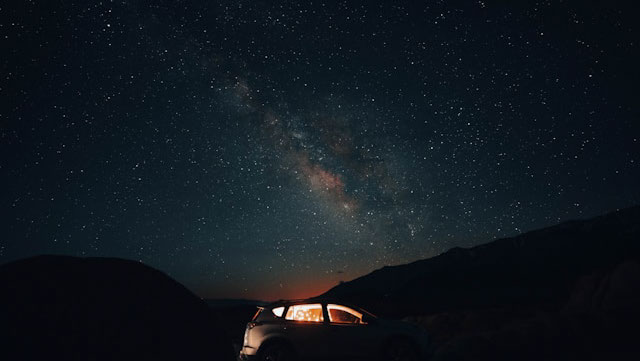
An actual sanctuary, Beaver Island is a central island located on Lake Michigan. Over 9,000 acres are available to explore and sightsee, with sanctuary lands open 24/7. It’s a fantastic spot for stargazing because you also get crystal-clear skies overhead. A community center serves as a hub for social activities, including guided tours for newcomers.
You can reach the island by either ferry or plane, with the recommended city to leave from being Charlevoix. Petoskey is also another local spot to find great hotels.
16. Big Cypress National Preserve, Florida
Located about 45 miles from Miami, the Big Cypress National Preserve is also next to the Everglades National Park. The area offers 290,000 hectares of federal land, making it a bustling center of biodiversity. It’s actually one of the darkest areas in the entire state, though it’s still affected by the nearby cities of Miami and Naples.
Don’t fret — it’s plenty dark enough to enjoy sightseeing of the night sky, and there are a few places to park or camp. If you’re planning to visit, you’ll want to book a stay in Miami, and then make the trip over to Big Cypress when you’re ready.
17. Cape Lookout National Seashore, North Carolina
As far as coastal areas go, Cape Lookout National Seashore near Emerald Isle is gorgeous and offers near endless views of the night sky. All areas are available for public access 24 hours a day. There are nearby islands that you can visit, too, via ferries or private boats.
This Dark-Sky-approved location also offers a variety of astronomy-related activities, including some experts you can visit at the nearby visitors center for tips and more. You’ll need to stay further away, but the trip down isn’t bad — just plan to be on the road for three or four hours.
18. Cosmic Campground, New Mexico
If basic campground amenities and remote locations catch your fancy, you’ll want to pay a visit to the Cosmic Campground in Western New Mexico. Resting on 3.5 acres in the Gila National Forest, it’s managed by the U.S. Forest Service. It’s also a beautiful area, very dark and far away from any kind of civilization, so come prepared.
Be sure to bring your own equipment if you decide to go, as there’s nothing local available. Moreover, the trip down from Albuquerque takes about three hours. It’s perfect for family camping trips, especially if you want to unwind away from electronics and the internet.
19. Crater Lake National Park, Oregon
The crystal clear and beautiful waters of Crater Lake are a wondrous juxtaposition to the glittery, shimmering stars in the sky overhead. On a clear night, it looks like a mirror dimension. But it’s also a really dark area and excellent for stargazing with equipment or without. It’s about a two-hour drive from Eugene, Oregon, to Crater Lake, but there are some lodgings in the area if you don’t want to travel far.
20. Sunset Crater Volcano and Walnut Canyon, Flagstaff, Arizona
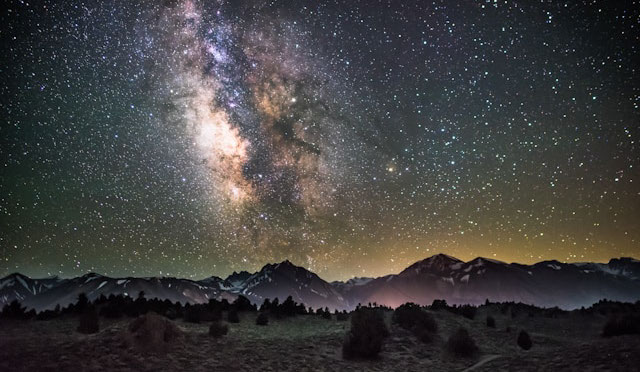
Cited as the birthplace of the modern stargazing movement, Flagstaff, Arizona is home to many wondrous sights, not just a shimmering night sky. Several observatories and astronomy centers in the area serve as the best spots to go to learn more about the stellar region. You’ll get bonus points if you bring your family along — they’ll love the natural landmarks in the area, especially if they’re budding explorers.
Bonus: Great Basin National Park, Nevada
This one is a bonus because it’s a 300-mile trip from Las Vegas, Nevada, to the Great Basin National Park. However, you’ll have scenic views the entire way, and once you reach your destination, you’re in for a wild stargazing experience.
Despite being a coveted location, it only sees about 100,000 visitors per year or less. That means it’s a remote destination away from where most people visit, and you’ll have plenty of time by yourself — or with your family — to relax, enjoy nature and stare at a glittering sky above.
If you do make the road trip, you’ll want to plan some stops at the Valley of Fire State Park, Pahranagat National Wildlife Refuge, Crystal Springs, Caliente, Cathedral Gorge State Park, Baker and — of course — the Great Basin National Park. You’re starting in Las Vegas, too, so don’t forget to explore the renowned city before heading off into the wilds of the state.
Some Quick Tips to Get the Most of Your Stargazing Adventure
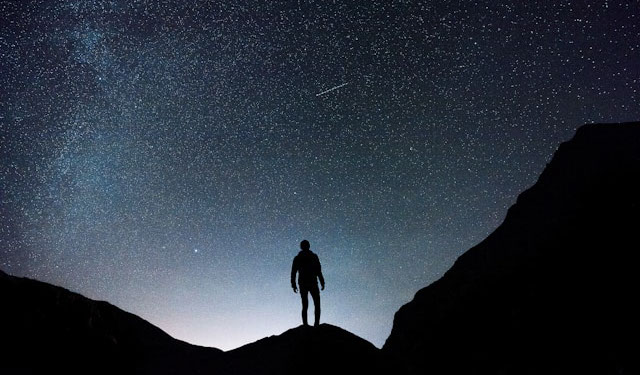
There are lots of incredible stargazing destinations across the United States. However, unless you live nearby, you’ll likely need to do a fair amount of traveling to get there. Before you set out on your grand trek, keep these helpful tips in mind on what to pack and how you should prepare.
Plan to Arrive Before Sunset
Hopefully, it’s not crowded at the location you choose, but arriving early — before sunset — ensures you and your family can pick a nice spot. More importantly, it allows you to orient yourself because the sun sets in the west. You’ll know which direction you’re facing, and you can better identify constellations, stars and planets that way.
If You Don’t Have a Telescope, Bring Binoculars
Contrary to popular belief, you don’t need a powerful telescope to enjoy stargazing or to have an incredible experience. Some people just use their phones, although the professionals wouldn’t recommend doing so. If you have a pair of binoculars, bring them with you — they help magnify objects.
You might also want to pack either a red flashlight or a flashlight with red cellophane or paper over the face. Red light allows you to see reasonably well in the dark without ruining your nighttime experience.
Download a Star Map Beforehand
Either bring a star map with you or download one onto your phone or tablet. They list the constellations, stars and objects viewable at your current location and also include a schedule. You’ll know exactly when and where to look for specific stellar sights.
Bring Some Snacks
Staying up late means you’ll be burning extra calories. It’s always a great idea to bring some snacks to munch on, like popcorn, trail mix or even some supplies for smores if there’s a fire lit nearby.
Make sure you take all your trash with you and store it in your car. Keeping critters at bay and safe from plastic waste is a must.
Chart Known Objects and Constellations First
Before pinpointing some of the most difficult objects in the night sky, stick to what you know. If there’s a constellation you always recognize, start there. Many people begin with the moon or the North Star if it’s visible where they are. Others go with the constellation of Orion, particularly Betelgeuse or Orion’s belt.
Be Social
As you’ve undoubtedly surmised, many locations host community events or offer publicly guided tours. If you have the opportunity, take it! It’s not just fun to be social and have those discussions with others — who also love astronomy — but also a fantastic opportunity to rub elbows with experts in the field.
Many of those tour guides and dark sky contacts have been studying the heavens for decades, so they know their stuff. Unsurprisingly, it’s one of the best ways to learn something new about the great expanse above you.
Do Your Research and Travel Prepared
Some of the locations are remote — enough so that it could be dangerous if you show up without the proper supplies and necessities. Be sure to do thorough research before your trip and always travel prepared. You never know what you’ll need, from food supplies, medicine and first aid to your stargazing equipment, tools, and beyond.
When you’re traveling with family or as a group, make sure to pack enough supplies for everyone, including food and water. It’s always better to have extra rather than too little. If you have any experience living off-grid, then this is a no-brainer. But it could make all the difference on your next trip, especially if you visit Death Valley or Denali National Park in Alaska. Both are quite the adventure, but they can also be dangerous for the unprepared.
Hit the Road for Incredible Summer Stargazing
Most of the locations here are remote, meaning they’re quite a distance from everyday city life. It can be challenging to find lodgings nearby in some cases, which means you’ll probably be staying a long road trip away.
Whether you drive your own vehicle or rent, plan to do some driving, including off-road trekking.
